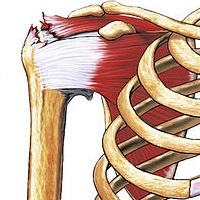
Photo from wikipedia
PURPOSE To compare patient preferences of postoperative cataract surgery topical medication use between a 1-Drop regimen and a 3-Drop regimen. SETTING Two private cataract surgery centers. DESIGN Open-label, randomized, self-controlled… Click to show full abstract
PURPOSE To compare patient preferences of postoperative cataract surgery topical medication use between a 1-Drop regimen and a 3-Drop regimen. SETTING Two private cataract surgery centers. DESIGN Open-label, randomized, self-controlled prospective study of 30 patients (60 eyes) undergoing routine cataract surgery in both eyes. METHODS In this contralateral eye study, one eye of each patient was randomized to the 1-Drop regimen of intracameral delivery of moxifloxacin and dexamethasone suspension and topical bromfenac for 30 days. The other eye, randomized to the 3-Drop regimen, received topical moxifloxacin 0.5% QID for 7 days and bromfenac 0.07% daily for 30 days postoperatively, along with prednisolone acetate 1% QID for 30 days. Patients reported their preferred regimen two weeks after the second surgery with a validated questionnaire. Secondary outcomes included subjective ocular pain,inflammation score, and out-of-pocket cost. Intraocular pressure (IOP) and macular thickness were also measured. RESULTS Of the 29 subjects, 28 (96.6%) significantly more preferred the eye treated with a 1-drop regimen. Self-reported pain, activity interference, and out-of-pocket cost were significantly less in the 1-drop group. Inflammation and 1-day uncorrected visual acuity were also significantly better in the 1-drop group. Macular thickness and average IOP were similar between groups. CONCLUSION Intracameral delivery of steroid and antibiotic was preferred by a significant majority of patients undergoing cataract surgery. These eyes had significantly less pain, inflammation, activity interference, and out-of-pocket cost and significantly better uncorrected visual acuity at 1 day. Intraocular pressure and Macular thickness were similar between groups.
Journal Title: Journal of cataract and refractive surgery
Year Published: 2022
Link to full text (if available)
Share on Social Media: Sign Up to like & get
recommendations!